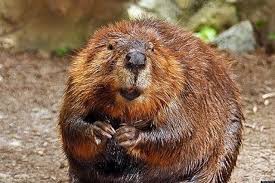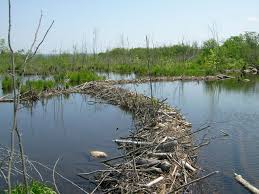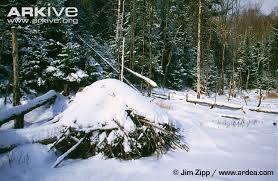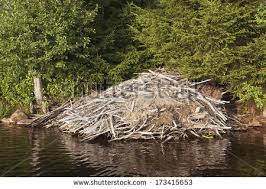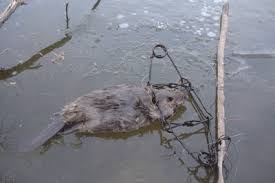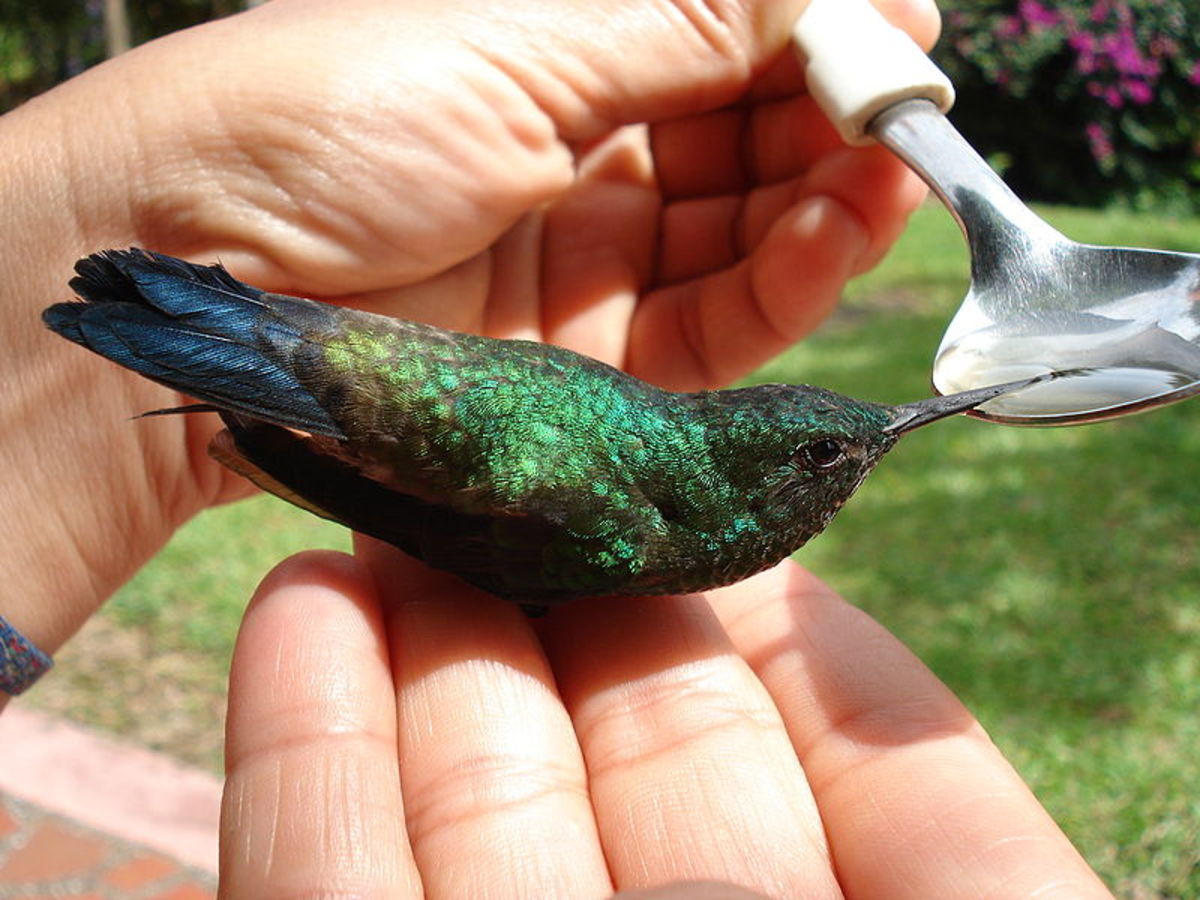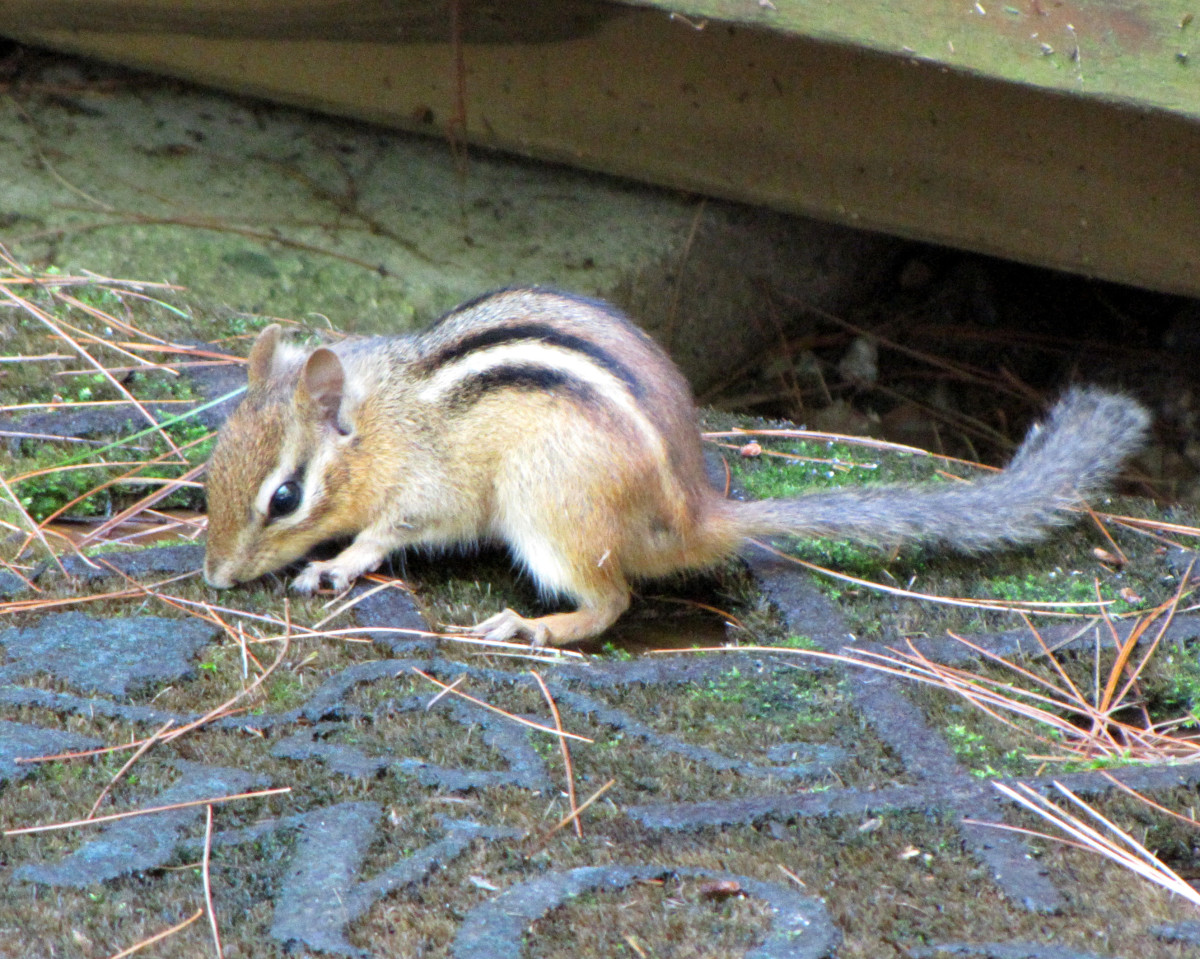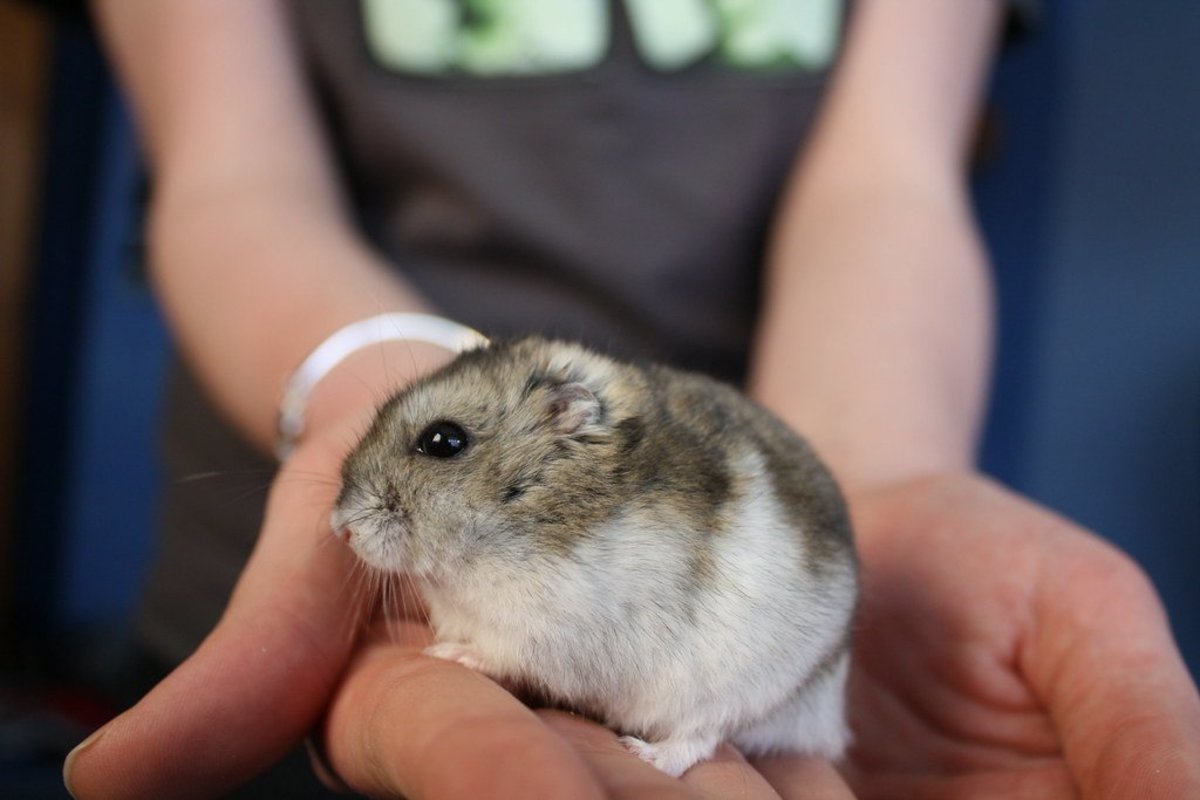Could Beaver Engineers Save Las Vegas?
Persecuted for centuries, Beavers are now our friends
Click thumbnail to view full-size





Beavers are the Best Hydraulic Engineers!
Much of the economic foundation of which has become the vast nation we know today as the United States of America, is due to the suffering and near demise of a sizeable, yet humble rodent, the Beaver.
Unassuming creatures indeed, but ones we are finding today seem to know much more, instinctively, about hydraulic engineering and water conservation than the best of human engineers.
Focus on the beaver's ability to dam and conserve rain and snow water run-off in, even the dryest of areas, has come to a head lately due to the bleak future of Las Vegas. This community has watched Lake Mead shrink for twenty years or more, the huge white cliff between the Lake's highest water marks and today's dismal showing indicating just how serious the loss has been. In fact, those who study such things have forecast no more than 20 years before Las Vegas will look more like Death Valley!
It has been a struggle for many who live off the land, especially ranchers, to accept the beaver, having viewed one of the world's largest rodents as either a cash-cow, or the enemy for several hundred years. The latter was mainly due to the creature's destruction of trees, often those planted by the rancher; occasional danger from fallling or damaged trees; large ponds where they weren't wanted, and, above all, ignorance of the benefits of the unique industry of the beaver as it restored and controlled run-off water, otherwise lost to the sea.
Before the beaver began to be persecuted in the 17th Century to the point of near extermination, there were probably as many as 200 million individuals in the USA. (I am keeping Canada's romantic yet shocking beaver history out of today's article...making the beaver their national animal took some salt!). They were decimated to near zero by the end of the nineteenth Century and are now back to a healthy 15 million or so, thanks to conservation and the new appreciation of the beaver's real worth. (It has been said a beaver costing $5 is immediately worth $300 spent on human labour on any given hydraulic project!).
Beavers migrated to the USA from Asia via Europe some 7 million years ago, according to the earliest fossil record found in the US.
They are the second largest rodent species in the world after the South American Capybara. There are two species in the USA, the Castor Canadensis, or common beaver and a mountain beaver; the distinct types are often confused. The European beaver is slightly larger, (see below*).
Beavers have extraordinary qualifications for what they do. Their incisor-like front teeth are literally as hard as iron, as the enamel on these huge teeth do actually contain iron. Beavers can grow quite large with a body-weight up to around 71 pounds (32 kilos). Their fur was much prized by fashion houses making hats and clothing, being both beautiful and soft as well as being hard-wearing and resistant against cold. Beaver pelts are composed of two layers and kept oiled by special glands, ensuring water-proofing.
Fortunes were made and squandered hunting the creatures for their pelts and even for food. Mainly nocturnal, another reason they are elusive during the day is they can stay up to 15 minutes underwater without coming up for air, and retire to their snug lodges if danger is perceived.
Throughout its long history, the beaver has suffered predation from North American carnivores as well as man. This is why it likes to construct its "lodge" surrounded by "moats" of water in the ponds it constructs itself. They are huge and dense mounds of sticks, stones and vegetation with two entrances underwater, along with sleeping platforms. In winter, they often coat the topside with mud which freezes, imparting a concrete-like finish to their home. Around the lodge underwater they store choice saplings and oither food items they collect from the banks and margins of the pond, often extended to give them access to more edible and building materials. In existing lakes and rivers beavers will often dig a lodge into the banks underwater and not bother dam building.
Like the sound of frying bacon can have us salivating, the sound of running water has proven to be the trigger that has the beaver shuffling and swimming off to construct or repair his dam.
They tend to prefer aspen and poplar trees, but many other species find their way into the beaver's digestive system, or into the engineering of his lodges and dams. They have a tendency to restore the balance of new forests by eliminating conifers and replacing them over time with herbaceous vegetation. Their extensive and permanent ponds resore fish stock as well as providing new sanctuary for wildfowl.
These exemplary, semi-aquatic citizens mate for life and keep their young (Kits) by their side for two years. They co-exist with other mammals of the river, such as otters, who may see them as brother creatures and do not predate on the peaceful beaver. They have an often uneasy truce with the American aligator, but who trusts crocodilians!? Bears, cougars, wolverines and wolves do enjoy a beaver steak when they can get it and even eagles have been known to predate on the kits. Despite this - and even despite man's best efforts to destroy them over 250 years, the beaver is now coming swiftly back to where he should be.
Since 1930, conservation leaders have been working with the beavers. Successful projects have appeared in many states. Albeit often reluctantly, urban beavers have been slowly returning to centers like Chicago and New York. Martinez, California, hit the headlines when a dispute with its citizens and the council - who wanted to destroy a beaver population in the town center - took on the trappings of a pitched battle like Britain's Brexit to leave or stay in Europe. The elected council hold-outs eventually gave in to the will of the voters, after a spokesperson, appealing to their better sides, intoned firmly, "The beavers may go this year, but you know who will be leaving next year!"
*North American Beavers are making their way back internationally as well as in countries like Finland, Chile, Argentina and more, experiment with restoring water catchment using the age old skills of these industrious rodents. And the charm of their cheeky presence and constant engineering fun times captures the hearts of their new host local townships. As the beaver helps with its dams, man helps by adding reinforcement to combat strong running water, such as driving wooden stakes for them to build the dam up against.
In Las Vegas and dry Nevada, studies are afoot to see just what the beaver can contribute to ease the over-use of water and the loss due to 5 years of drought....perhaps as far as ensuring a bright future with water reservoirs in the United States we can indeed, "Leave it to Beaver!"


